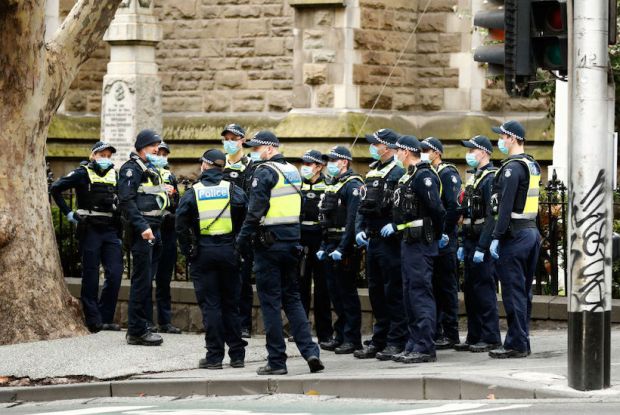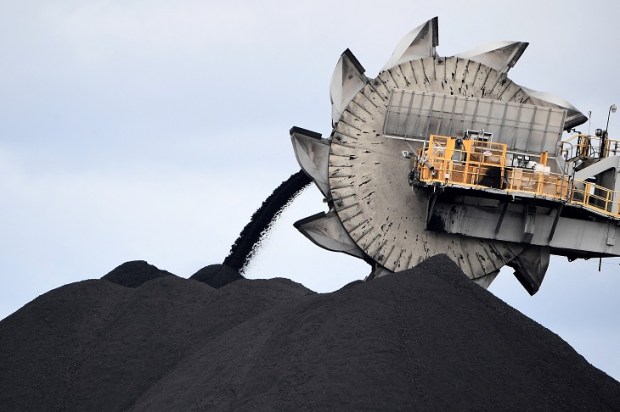The past 12 months have exposed the deep and dangerous division between the two Australias, one comprised of mainstream Australians and the other comprised of the political and bureaucratic elite. But these divisions have been evident for some time, and mainstream Australians have been denied access to the dignity of work while the political class has abdicated its responsibility to ensure that all Australians can access decent work and wages.
Last week, the February jobs data was released by the Australian Bureau of Statistics and welcomed by everyone from commentators to the Prime Minister and retail investors. The number of employed people is finally back to pre-lockdown levels after a year of disruption. Australia’s economic recovery has come along better than most economists thought it would even six months ago, which demonstrates the awesome force and resilience of a free market to bounce back from a government-inflicted recession.
For Australian workers, the past decade, not just the past year, has been tough. Wages growth has been sluggish since 2013, and young people actually saw their wages decline following the global financial crisis, as documented by the Productivity Commission last year. Additionally, it has become harder for people to earn enough money to support themselves and their families, evidenced in the decline of full-time work and the rise of underemployment.
As Australians look to move on from 2020, getting back into work and seeing increases in their wages are front-of-mind. The federal parliament needs to act to enable this by making it easier for businesses to invest and create jobs, but at the moment they are failing. As John Kehoe wrote in the Australian Financial Review after the ABS labour force data was released, “Parliament’s failure to legislate changes to award simplification, bargaining and greenfield project agreements will mean lowering unemployment and lifting wage growth will be harder and take longer.”
In fact, it is underutilisation, not just unemployment, which needs to be lowered. Most Australian economists agree that unemployment is no longer as useful a measure as it used to be; being employed isn’t what it once was, and workers are now increasingly likely to be employed to work fewer hours than they want or need to. The underutilisation rate adds together those who are outright unemployed along with those who are in work but not with enough hours. The divergence in the unemployment and underutilisation rates (they have been moving in opposite directions since the GFC) is the reason why the Reserve Bank of Australia has had to consistently revise down its estimate of full employment in recent years.
In the most recent minutes of the monetary policy meeting of the RBA, it was noted that “a materially lower unemployment rate would be needed to generate wages growth in excess of 3 per cent”. The RBA suggests that such a “materially lower” rate would be in the low fours or even the high threes. This is based on the idea that lower unemployed is associated with higher wages.
To this point, the last time that Australians experienced consistently strong wages growth in excess of 3 per cent, as the RBA wants to see, was between 2000 and the start of the GFC. During this period, the underutilisation rate declined from around 13 per cent to 10 per cent Further, an analysis of ABS wage price index data combined with the underutilisation rate suggests that it is highly unlikely that annual wages growth will even reach 3 per cent without the underutilisation rate being below 13 per cent. It is currently 15.1 per cent.
The ‘puzzle’ of low wages growth in recent years has been blamed on a number of things, from the supposed ‘casualisation’ of the workforce (which has only taken place in the youth workforce), to the demise of unions. There is, in fact, no real puzzle: since the end of the mining boom, the underutilisation rate has never been below 13 per cent. And wages growth mirrored movements in the underutilisation rate, decreasing when the rate goes up and remaining stagnant when the rate flatlines.
The message for the Australian parliament is clear: if they want to see wages growth for Australian workers, they must enact policies to tighten the labour market. This is the only way that wages will increase materially. There are a number of avenues to doing this, including reducing caps on overseas migration and promoting business investment by cutting red tape and expanding schemes such as the instant asset write-off.
The current policy of relying on the RBA’s money printing and yield curve control will only lead to price inflation. Post-GFC monetary policy has demonstrated that the RBA has been unable to tighten the labour market, no matter how much it cuts interest rates. The political class must combat underutilisation and unemployment, and doing this requires real policy reform.
Creating the right environment for business investment and a tight labour market is the only way to induce wages increases. While underutilisation remains so high, wages will not budge.
Cian Hussey is a Research Fellow at the Institute of Public Affairs. Join as a member at www.ipa.org.au.
Got something to add? Join the discussion and comment below.
Get 10 issues for just $10
Subscribe to The Spectator Australia today for the next 10 magazine issues, plus full online access, for just $10.


























Comments
Don't miss out
Join the conversation with other Spectator Australia readers. Subscribe to leave a comment.
SUBSCRIBEAlready a subscriber? Log in